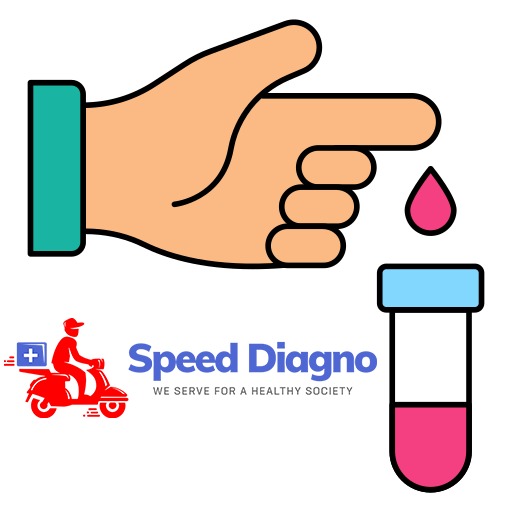- Home
-
Test Categories
- Diabetes
- Urinary
- Thyroid
- RTPCR
- Genetic
- Cancer
- Haematology
- Biochemistry
- Serology & Immunology
- Clinical Pathology
- Cytology
- Microbiology
- Endocrinology
- Histopathology
- MOLECULAR DIAGNOSTICS
- Pregnancy(Biochemistry)
- Liver
- Prostate
- Fertility
- Gastro
- Autoimmune Disorders
- Heart
- Kidney
- Vitamins
- Tuberculosis (TB)
- Anemia
- Fever
- Allergy
- Blood Tests Rare
- Profiles
- Packages
- About Us
- Why Choose Us
- Upload Prescription
- Corporate Wellness
- Contact Us

-
Overview
What is the Albumin/Globulin (A/G) Ratio?
The Albumin/Globulin (A/G) Ratio is a blood test that measures the balance between two types of proteins in the blood: albumin and globulin. These proteins are important for various functions, including maintaining osmotic pressure, transporting substances, and supporting the immune system. The A/G ratio provides valuable information about liver function, kidney health, and immune status.
- Albumin is produced by the liver and helps maintain fluid balance and transport hormones, vitamins, and enzymes.
- Globulins include a group of proteins that are involved in immune responses and include antibodies.
Purpose of the Albumin/Globulin (A/G) Ratio:
Assessing Liver Function:
Low A/G ratios may suggest liver disease or cirrhosis, where the liver produces insufficient albumin.Detecting Kidney Disease:
Abnormal A/G ratios can indicate kidney disease, where proteins are lost in urine.Diagnosing Immune Disorders:
High levels of globulin and a low A/G ratio can be associated with autoimmune diseases or chronic infections.Monitoring General Health:
Often measured as part of routine health assessments to detect early signs of disease.
When is the Albumin/Globulin (A/G) Ratio Recommended?
Liver or Kidney Disease:
If symptoms like jaundice, fluid retention, or fatigue are present, this test helps assess liver and kidney function.Chronic Infections or Immune Disorders:
In cases of prolonged infections or suspected autoimmune diseases, the test can help evaluate the immune response.Nutritional Assessment:
It may be part of a nutritional panel to check for malnutrition or protein imbalances.
Sample Type:
Blood sample (venipuncture).
Preparation for the Test:
- Fasting: Fasting is not typically required but follow any specific instructions given by your doctor.
- Medications: Inform your doctor about any medications, as they might affect protein levels.
How the Test Works:
- A blood sample is drawn and sent to the lab.
- The levels of albumin and globulin in the blood are measured.
- The A/G ratio is calculated by dividing the amount of albumin by the amount of globulin.
- Normal A/G Ratio: Typically ranges from 1.1 to 2.5, though this may vary slightly between labs.
Abnormal A/G Ratios:
- Low A/G Ratio: May indicate liver disease, kidney disease, or an overproduction of globulin (as seen in autoimmune disorders or multiple myeloma).
- High A/G Ratio: May indicate a decrease in globulin production, possibly due to immune deficiencies or other conditions affecting globulin synthesis.
SpeedDiagno Booking and Collection:
- Easy Booking: Schedule your Albumin/Globulin (A/G) Ratio test through the SpeedDiagno app or website.
- Convenient Sample Collection: A professional phlebotomist will collect your blood sample from your home within minutes of booking.
- NABL Certified Labs: Your sample will be analyzed in NABL-certified laboratories, ensuring reliable and accurate results.
Turnaround Time:
- Sample Collection: Blood draw takes just a few minutes.
- Results: Typically available within 24-48 hours, with results accessible through the SpeedDiagno app or website.
Why Choose SpeedDiagno?
- Convenient Booking: Book your test online or through the app.
- At-Home Sample Collection: Enjoy the convenience of sample collection from the comfort of your home.
- Certified Labs: Tests processed at NABL-certified labs for high accuracy.
- Secure Online Results: Get your results securely and quickly through SpeedDiagno’s platform.
Support Section
For any questions or assistance with the Albumin/Globulin Ratio test, SpeedDiagno offers several support options:
WhatsApp Support:
Contact us through WhatsApp via the SpeedDiagno app or website for immediate support.Phone Support:
Call us at 8522 853332 for assistance from our customer service team.In-App Support:
Use the in-app support feature on the SpeedDiagno app for immediate help.
SpeedDiagno provides convenient and reliable testing services, ensuring a seamless experience from booking to results
All test groups and subgroup
-
ALBUMIN/GLOBULIN RATIO
-
Total Protein
-
Albumin
-
Globulin
-
Albumin/Globulin Ratio
-
